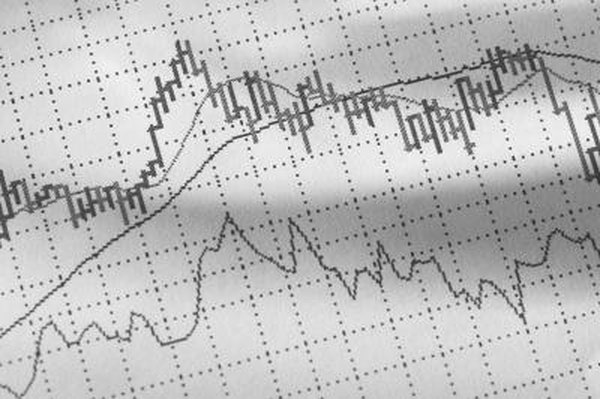Why Use a Logarithmic Scale to View Stocks?
Using the correct charting technique will make your charts more useful.
NA/AbleStock.com/Getty Images
When creating a price chart for a stock, a group of stocks or index, the price levels are represented on the vertical axis, also known as the Y axis, while time is represented on the horizontal, or X, axis. You use either an arithmetic scale or a logarithmic scale, also known as a "log scale," to divide the elements on the vertical axis. The stock you are analyzing should dictate your selection of scale.
Arithmetic Scale
When using an arithmetic scale, the vertical axis is divided into equal increments. As a result, the same distance on the scale always represents the same price change, regardless of where you are along the axis. If for example, 1/8 of an inch is the distance between each dollar increment, the space between $2 and $3 is 1/8 inch, as is the space between $24 and $25.
Logarithmic Scale
When using a log scale, the same distance will cover a wider range of prices as you go from the bottom to the top on the vertical axis. If, for example, 1/8 of an inch is the distance between $2 and $3, the same 1/8 of an inch will take you from, say, $20 to $30, since the later set of values is higher on the axis. While log scales can be set up in various ways, generally the same distance along the price axis always corresponds to the same percentage change. In our example, 1/8 of an inch represents a 50 percent price change as the price goes from $2 to $3 and from $20 to $30.
Advantages of Log Scales
A log scale is highly useful if the price of the stock you wish to chart has moved by a large percentage over the period your chart will cover. If, for example, the stock's price has gone down from $150 to $8, and you use an arithmetic scale, the distance between each successive dollar will have to be tiny, unless you are viewing the graph on a very large screen, as your graph must have enough space for 150 such increments. Hence, you'll barely notice the change from $8 to $9, which is a significant 12.5 percent gain. A log scale will eliminate this problem. Regardless of where you are on the graph, a significant percentage move will always correspond to a significant visual change.
Benefits of Arithmetic Scales
If the stock's price has been fairly stable over the period you will cover, an arithmetic scale is more advantageous. If the stock's price has been between $4 and $8, for example, you will see small percentage gains and losses anywhere on the graph. You can probably eyeball these small percentage changes by visually tracking the line. The equal distance between each successive dollar throughout the chart also makes the dollar impact of price changes easier to visualize, which is an advantage the log scale lacks. If you are holding a thousand shares, you make $1,000 regardless of whether the stock goes from $1 to $2 or from $11 to $12. The arithmetic scale helps you visualize how high the stock must climb to hit your profit target.
References
Writer Bio
Hunkar Ozyasar is the former high-yield bond strategist for Deutsche Bank. He has been quoted in publications including "Financial Times" and the "Wall Street Journal." His book, "When Time Management Fails," is published in 12 countries while Ozyasar’s finance articles are featured on Nikkei, Japan’s premier financial news service. He holds a Master of Business Administration from Kellogg Graduate School.

